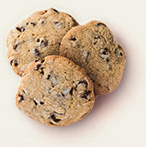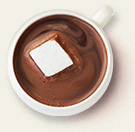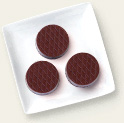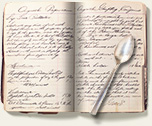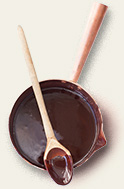Glossary of Terms
% CACAO
% cacao is how much of the chocolate is derived from the cocoa bean, inclusive of added cocoa butter. This means that other ingredients like sweeteners (cane sugar for example), lecithin, as well as any other flavors or additives are not included in the % cacao. The percent cacao impact flavor as well as performance. Understanding the composition of the percentage cacao is just as important (see added cocoa butter, below). You may have a 70% with no added cocoa butter and a 70% with added cocoa butter and the flavor and viscosity will vary depending on the formula. If you’re interested in knowing more about the exact formulation of your chocolate to better select the right chocolate for your application, please reach out to your local Guittard sales representative.
ADDED COCOA BUTTER
Cocoa butter that supplements the amount of cocoa butter naturally inherent in the cocoa bean. Chocolate with added cocoa butter is correctly labeled in terms of its ‘% cacao’, and, any added cocoa butter is included in this percentage, since it is also a derivative of the cacao bean.
BITTERSWEET CHOCOLATE
Chocolate that is at least 35% chocolate liquor may be called either semisweet or bittersweet, the choice being left to the manufacturer.
BLENDING
In artisan style chocolate making, this process normally occurs after roasting, winnowing and grinding. During these steps, beans are kept separate so that each can receive the treatment optimal for that bean type.
BLOOM
Cocoa butter from within the chocolate that rises to the surface when the chocolate is exposed to warm temperatures and then cooled. (The chocolate may be remelted and retempered to return it to its bloom-free state.)
Fat Bloom - Cocoa butter crystallizing or re-crystallizing at the chocolate surface (fat bloom may also appear throughout the chocolate) without going through the tempering/pre-crystallization process, resulting in a dull, fuzzy, white haze appearance. Causes include: high temperatures, incompatible fats, & poor tempering/cooling.
Sugar Bloom - Moisture in contact with chocolate surface dissolves sugar, forming a syrup, which crystalizes when moisture evaporates.
CACAO
The raw, agricultural ingredient used to make chocolate. While ‘Cacao’ and ‘Cocoa’ are technically interchangeable, the chocolate industry tends to use the former to describe the raw ingredient, and the latter to reference elements such as cocoa powder and cocoa butter. Cacao consists of the cocoa nib and the shell. The shell is removed during processing whereby the nib is used to make chocolate. The nib consists of roughly 50% fat and 50% solids – the exact percentages differ based on the varietal and region. Once ground, the nib can be used to make either powder and butter or chocolate.
CHOCOLATE
Under US standards of identity, ‘chocolate’ refers to ‘chocolate liquor’, thus technically speaking, the terms ‘chocolate liquor’, ‘cocoa mass’ and ‘chocolate’ are all the same thing. More generally speaking, ‘chocolate’ is used to describe the familiar product we all know that is made from the basic ingredients of cacao beans, and cane sugar.
CHOCOLATE LIQUOR
Comprised of 52-54% (50-60% legally) cocoa butter (fat) and 46%-48% cocoa solids (cocoa powder). Chocolate liquor (the American term for ‘cocoa mass’) results when cacao nibs are ground into finer and finer particles. It does not contain any alcohol.
COCOA BUTTER
The part of the cacao bean that is fat. A process of pressing chocolate liquor separates cocoa butter from cocoa powder. White chocolate is pure cocoa butter. Cocoa butter is not a dairy product.
COCOA POWDER
The solids that remain once cocoa butter is extracted or pressed from chocolate liquor. Cocoa powder can have differing cocoa butter content, most often in the ranges of 10-12% and 22-24% cocoa butter. Above 22% cocoa butter content, the cocoa is referred to as ‘High fat cocoa’ or ‘Breakfast cocoa.’ Cocoa powder is also differentiated between ‘dutched and ‘natural. Dutched cocoa powder is processed with an alkali (i.e. potassium or sodium carbonate) to change the pH, color, and flavor, while natural cocoa powder is simply the flavor and color as inherent to the cocoa beans and roasting. Also see ‘Dutching’.
CONCHING
The final and key step in chocolate flavor development. A conch is used to simultaneously churn and cook the chocolate allowing it to develop different flavors while also cultivating a smooth, silky texture. Depending on the flavor and chocolate style desired (French, Belgian or Swiss for instance), different lengths of time and temperatures may be used in conching, and innumerable flavor characteristics may be achieved. Guittard has over 135 years of custom chocolate making and conching experience.
COTYLEDONS
The part of the fresh cut cacao bean that later becomes the nib when the cacao bean is dried.
COUVERTURE
Chocolate containing NOT less than 32% cocoa butter. Fine quality chocolate. The term is defined for legal purposes only in France, although this French definition has become an accepted standard worldwide.
FAT CRYSTALLIZATION
As chocolate is cooled and the temperature of the cocoa butter begins to reach its melting temperature range and lower, initiating nucleation, growing into crystals, and changing from a liquid to solid crystalline state.
MELTING CHOCOLATE
In liquifying chocolate, it is the cocoa butter, the fat, that is actually getting melted – changing from solid to liquid state. Because of the triglyceride composition of cocoa butter, it melts over a temperature range (~90-120°F), not just one single point. This is what makes chocolate so palatable, and for this reason melting is in important part of handling and tempering chocolate.
MILK CHOCOLATE
A chocolate that contains at least 10% cocoa mass (chocolate liquor) and 12% whole milk. As an example, our Organic Milk Chocolate wafers contains 38% cacao, almost four times this legal minimum.
NIBS
The part of a cacao bean that, once roasted, and the shell removed, is ground into chocolate liquor. Raw, this part of the cacao bean is referred to as the cotyledons.
OVER-TEMPERED CHOCOLATE
Chocolate that is over-tempered has too much cocoa butter seed – too large a portion of the cocoa butter has crystallized. This results in a grainy chocolate texture and dull surface appearance. The good news is that chocolate that is over-tempered chocolate can be re-melted and tempered again to achieve the smooth, even texture and snap expected from quality chocolate.
POLYMORPHISM
Cocoa butter is an exciting and complex fat. When cocoa butter crystallizes, the triglycerides can pack into different crystal patterns that we call polymorphs. Each crystal polymorph has its own thermodynamics.
PRE-CRYSTALLIZING
Cocoa butter crystallization initiated by the stirring and cooling/temperature change occurring during seeding.
ROASTING
Dried cacao beans arriving from their origin country must be roasted. The optimal roasting time and temperature depends on the bean variety, bean size, moisture content, season of the year and flavor desired, among other factors. Each lot of beans used to make Guittard chocolate is roasted separately in order to retain the unique flavor characteristics of each bean type.
SEEDING
A process to pre-crystallize chocolate by inoculating melted chocolate with beta form-V crystals from previously well-tempered chocolate.
SEMISWEET CHOCOLATE
A chocolate that is at least 35% chocolate liquor may be called either semisweet or bittersweet, the choice being left to the manufacturer.
STONE GRINDING
After winnowing, cacao nibs are slowly ground down into smaller and smaller particles. The stone grinding machine, or melangeur, is a hallmark of the artisan French chocolate making process and is no longer found in larger factories.
SUGAR BLOOM
Sugar from within the chocolate that rises to the chocolate’s surface when the chocolate is exposed to moisture, such as the condensation that develops on the chocolate’s surface when it is taken from the refrigerator. If storing chocolate frozen or refrigerated, take extra care in bringing it to room temperature for use to avoid condensation as the chocolate warms, and ultimately avoid sugar bloom issues.
TEMPERING
The process of turning melted chocolate into a solid mass of stable cocoa butter crystals with a fine, even grained texture, accomplished with controlled cooling of the chocolate with agitation, to form many fine-grained beta crystals, as opposed to other crystal forms which are unstable and of random formation.
UNDER-TEMPERED CHOCOLATE
There are not enough cocoa butter seed crystals present in the chocolate, so when the chocolate cools, it will not set properly, will not readily release from molds, and will likely have a cheesy or grainy texture with a bloomed, dull surface appearance.
UNTEMPERED CHOCOLATE
Will not set properly, does not readily release from molds, cheesy texture, bloomed, dull surface appearance, grainy texture. There is no crystal seed present.
UNSWEETENED CHOCOLATE
Chocolate-liquor that generally contains 50-58% cocoa butter (and 42-50% cocoa solids), and no sugar.
VISCOSITY
A fluid requires a certain force exerted against it before it will begin to flow (yield value) and it requires a certain force to sustain movement, once begun (plastic viscosity). The greater the force, the greater the viscosity. When a liquid is thick like honey it is called viscous or it is said to have a high viscosity. By comparison, pancake syrup would be considered a lower viscosity than honey. When working with chocolate, different viscosities are used and required for different in applications, and the viscosity is most typically referred to as a single point viscosity using units such as Macmichael or centipoise.

